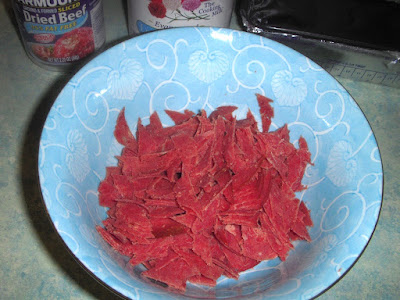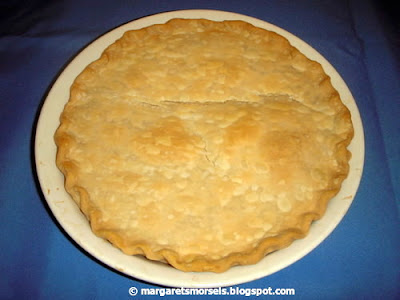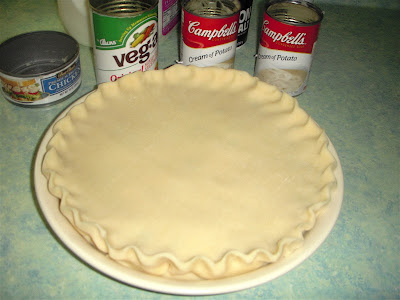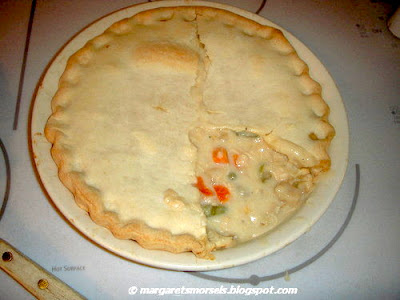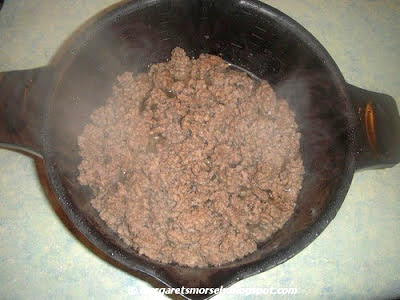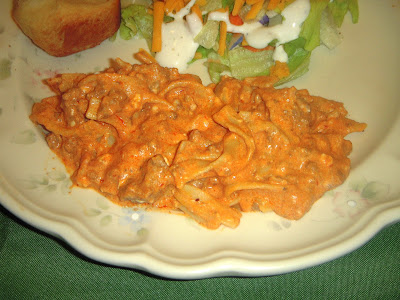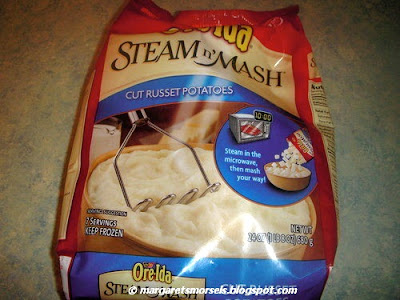Unless something happens and I jump on the gravy bandwagon, this will be the only blog I ever post about gravy. The only gravy I serve comes from a jar at Thanksgiving, a packaged mix when I fix chicken fried steak or is created by an entree as it cooks.
My mom was a typical Southern cook and made gravy every available opportunity. There was turkey gravy at Thanksgiving, giblet gravy with boiled eggs at Easter, redeye gravy, sausage gravy and brown gravy, to name a few. She also made dried beef gravy which has the distinction of being the only gravy I would eat as a child and the only gravy I actually cook as an adult.
If you've never had dried beef, you've probably seen it at the grocery store. It's usually sold in glass jars and is typically found in the canned meat aisle.
Dried beef, also known as chipped beef, is very thin slices of smoked, salted and dried beef. I don't care for dried beef in other dishes, but I absolutely love it in gravy. Technically, though, dried beef gravy isn't a gravy, but a sauce.
Gravy is made from the fat and juices -- drippings -- that remain after cooking meat and is always served hot. The sauce for dried beef gravy starts with a roux. Roux is the French term for cooking a mixture of fat and flour over low heat. A liquid is added and the mixture is cooked until it reaches the desired thickness. Unlike gravy, sauces can be served hot or cold. There are many different kinds of sauces, but dried beef gravy is actually a white sauce which is known as Bechamel.
There are two things to remember when you make gravy. One, make sure you have all the ingredients ready to use. Gravy has to be stirred constantly so you won't have time to measure things after you start cooking. Two, cook gravy over medium-low to low heat to keep the mixture from scorching.
Dried beef gravy only uses five ingredients so there's very little prep work required. The pieces of dried beef are rolled together and need to be cut into small pieces. The easiest -- and quickest -- way to do this is unroll the beef and cut them all at once with a pair of kitchen shears.
Unrolled and uncut.
Cut into pieces.
Put the shortening in a large skillet and heat it over medium-low heat. Once it's melted, add the dried beef and cook it a minute or two, just long enough for it to get a little brown. Add the flour and cook it five minutes to remove the starchy taste.
The flour after it's been cooked five minutes.
You can use all-purpose or gravy flour, but not self-rising flour. Gravy flour, better known as Wondra, is a finely ground all-purpose flour that dissolves instantly and is unlikely to form lumps. Wondra makes a smooth gravy, but I stick with all-purpose flour which is what my mother always used.
Once the flour has cooked, add the liquid in this case evaporated milk and water. Evaporated milk is a canned milk that has 60% of the water removed. It's wonderful for gravy because it adds a creamy texture. It's available in regular, low-fat and nonfat varieties. I use nonfat which is akin to skim milk. Skim milk is an acquired taste so use regular or low-fat evaporated milk if you want a richer flavor.
Once the ingredients are combined, let them come to a boil, stirring the whole time. Continue to cook and stir the gravy until it's the right consistency. Most gravy recipes tell you to bring the gravy to a boil and stir it one or two minutes. My experience with dried beef gravy is it takes longer -- about five minutes -- to thicken. If the gravy isn't thickening enough, you can increase the heat to medium, but make sure to stir the gravy constantly.
The gravy can be served over toast, but I prefer biscuits. My mother always made homemade biscuits, but I purchase frozen biscuits and cook however many I need. I'm not a fan of canned biscuits, but if that's what you like or have on hand, you could substitute them instead. Or, you could make a batch of homemade biscuits.
Whether you call it gravy or sauce, serve it with toast or biscuits, dried beef gravy is a great addition to your recipe box. It's a different gravy than most people are used to eating, but it's good gravy!
Dried Beef Gravy
4 Servings
3 Tbsp. shortening
1 (2.25 oz.) jar dried beef, cut into pieces
2 Tbsp. all-purpose flour
1 (12 oz.) can evaporated milk
1/2 cup water
Melt shortening in skillet over medium-low heat. Add dried beef; brown just a minute or two. Add flour and cook for 5 minutes. Combine milk and water. Add to flour mixture and cook until it reaches the desired thickness.
© Margaret's Morsels



